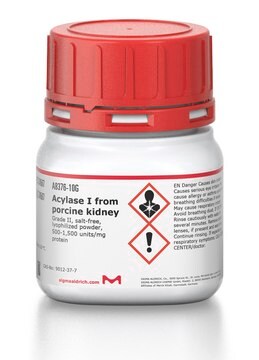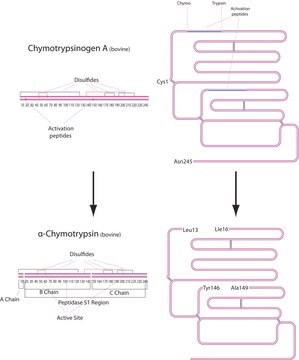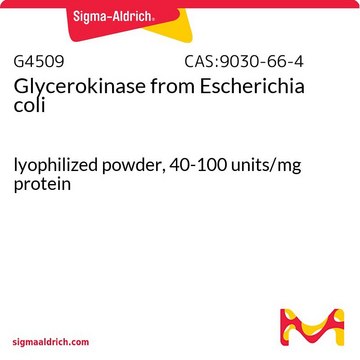C-12422
Normal Human Epidermal Melanocytes 3 (NHEM 3)
Juvenile foreskin, isolated in PMA-free Melanocyte Growth Medium M3, 500,000 cryopreserved cells
Iniciar sesiónpara Ver la Fijación de precios por contrato y de la organización
About This Item
UNSPSC Code:
41106514
NACRES:
NA.81
Productos recomendados
packaging
pkg of 500,000 cells
technique(s)
cell culture | mammalian: suitable
shipped in
dry ice
storage temp.
−196°C
General description
Lot specific orders are not able to be placed through the web. Contact your local sales rep for more details.
Application
Primary Normal Human Epidermal Melanocytes (NHEM) are isolated from the epidermis of juvenile foreskin and are provided in a cryopreserved format. Melanocytes are located in the stratum basale, but branch out between the keratinocytes in suprabasal layers. About 5-10 % of the cells in the epidermis are melanocytes. The main purpose of melanocytes is the production of melanin, the protein responsible for the pigmentation of the skin, eyes, and hair. Melanin protects the cells in the skin and in deeper layers from the hazardous effects of UV radiation. It is produced and stored in melanosomes, which are located close to the melanocyte membrane, but it can also be transferred to neighboring keratinocytes.
Normal Human Epidermal Melanocytes M3 are isolated using the serum-free, BPE-free and PMA-free Melanocyte Growth Medium M3. Since PMA is a tumor promoting mitogen, it can interfere with experimental approaches. Therefore, we recommend using cells isolated in Melanocyte Growth Medium M3 and also using this medium for cultivation. Normal Human Epidermal Keratinocytes (NHEK) and Normal Human Dermal Fibroblasts (NHDF) from the same donor are available on request.
Normal Human Epidermal Melanocytes M3 are isolated using the serum-free, BPE-free and PMA-free Melanocyte Growth Medium M3. Since PMA is a tumor promoting mitogen, it can interfere with experimental approaches. Therefore, we recommend using cells isolated in Melanocyte Growth Medium M3 and also using this medium for cultivation. Normal Human Epidermal Keratinocytes (NHEK) and Normal Human Dermal Fibroblasts (NHDF) from the same donor are available on request.
Quality
Rigid quality control tests are performed for each lot of Normal Human Epidermal Melanocytes. They are tested for cell morphology, adherence rate and cell viability. Furthermore, immunohistochemical tests for the cell-type specific marker, Mel-5, are carried out for each lot. Growth performance is tested through multiple passages up to 15 population doublings (PD) under culture conditions without antibiotics and antimycotics. In addition, all cells have been tested for the absence of HIV-1, HIV-2, HBV, HCV, HTLV-1, HTLV-2 and microbial contaminants (fungi, bacteria, and mycoplasma).
Warning
Although tested negative for HIV-1, HIV-2, HBV, HCV, HTLV-1 and HTLV-2, the cells – like all products of human origin – should be handled as potentially infectious. No test procedure can completely guarantee the absence of infectious agents.
Culture Medium
Melanocyte Growth Medium M3 (C-4310)
Subculture Routine
Click here for more information.
Other Notes
Recommended Plating Density: 5000 - 10000 cells per cm2
Passage After Thawing: P2
Tested Markers: Mel-5 positive
Guaranteed population doublings: > 15
Passage After Thawing: P2
Tested Markers: Mel-5 positive
Guaranteed population doublings: > 15
Storage Class
12 - Non Combustible Liquids
wgk_germany
WGK 1
flash_point_f
Not applicable
flash_point_c
Not applicable
Elija entre una de las versiones más recientes:
Certificados de análisis (COA)
Lot/Batch Number
Lo sentimos, en este momento no disponemos de COAs para este producto en línea.
Si necesita más asistencia, póngase en contacto con Atención al cliente
¿Ya tiene este producto?
Encuentre la documentación para los productos que ha comprado recientemente en la Biblioteca de documentos.
Nuestro equipo de científicos tiene experiencia en todas las áreas de investigación: Ciencias de la vida, Ciencia de los materiales, Síntesis química, Cromatografía, Analítica y muchas otras.
Póngase en contacto con el Servicio técnico






